Key Information
Course Format: Distance learning, assessment only - encouraging independent, adult-centred, self-directed learning
Enrolment: April - November
Assessment: Case diary with synopsis, critical commentaries and case reports
Timetable: November - March
Enrol Now
Course Information
Please note:
You can only purchase this course online if you are an existing CertAVP candidate. During the checkout process you will be required to enter your RVC username.
How to enrol as a new CertAVP candidate.
At the end of the module, candidates should be able to:
- Provide appropriate care for the unconscious patient, including support / maintenance of normal homeostasis
- Demonstrate a sound knowledge of the physiology, pharmacology and biophysics of relevance to anaesthesia
- Demonstrate knowledge of the anatomy of the thorax, abdomen, head and neck as they relate to anaesthesia
- Appreciate the impact of commonly encountered pathological processes in the various species, on the conduct of anaesthesia, and be able to appropriately modify the anaesthesia in light of these
- Understand the pharmacology and clinical use of drugs used for premedication and sedation
- Understand the pharmacology and clinical use of analgesic drugs (opioids, non-steroidal anti-inflammatories, local anaesthetic agents)
- Demonstrate familiarity with commonly performed regional nerve blocks
- Understand the pharmacology and clinical use of intravenous anaesthetic drugs, and their use in total intravenous techniques
- Appreciate how a generic anaesthetic machine and vaporiser function, and be able to perform appropriate safety checks
- Understand the pharmacology of the inhalational anaesthetic agents, and how this dictates their clinical use
- Understand the functional characteristics of anaesthetic breathing systems (“circuits”)
- Understand the pharmacology and clinical use of neuromuscular blocking drugs
- Appreciate the advantages and disadvantages of intermittent positive pressure ventilation, and how this may be delivered
- Understand in general terms how the electronic monitoring systems used during anaesthesia function, and be able to interpret the information they provide
- Plan and deliver appropriate fluid therapy (including an awareness of the principles of blood transfusion) for the range of patients encountered in small animal practice
- Provide appropriate anaesthesia for specific clinical situations, for example, paediatric and geriatric anaesthesia, ophthalmological procedures, caesarean section, etc
- Appreciate the unique characteristics of small mammals, birds, reptiles and fish which may complicate the anaesthetic process
- Recognise and deal with common anaesthetic emergencies
- Review and constructively criticise current literature on the speciality, to determine its relevance to their current practice
- Utilise their understanding of Evidence Based Medicine and Decision Analysis to develop practical treatment protocols for their patients
- Review the outcomes of at least part of their clinical work, using the process of clinical audit to improve performance
- Recognise when they require support from more experience anaesthetic colleagues for a particular case.
Please download the Module Syllabus, found in the Key Information box

